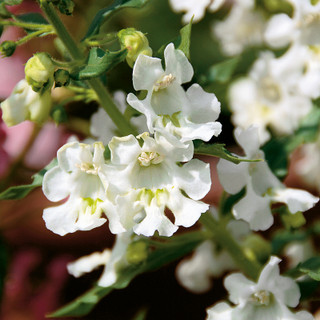
Lantana
Uses:
- Containers
- Garden Bed Borders
- Wildlife Gardens
Features:
- Sun & Heat Loving Annual
- Multi Colored Blooms
- Attracts Bees, Butterflies & Hummingbirds
Sunlight:
- Full Sun
- 6+ Hours of Direct Sun
In most areas of the country, gardeners enjoy stunning lantana in the summer only, as pretty flowering borders and container plants. Plant lantanas in full sun where all pollinators can enjoy them.
Why Buy Lantana Online?
Lantana hybridizers continue to create stunning color combinations in pink, yellow, lavender, and orange flowers. We offer more than 30 varieties including the top-performing series like Bandana®, Bloomify™, and Luscious®. Most lantanas grow to about 24 inches high and around when used as annuals. Where they are perennial, they can reach 5 feet tall and about 4 feet wide.
Lantanas are easy-care flowering plants. If lantanas lack flowers, they likely need more sun and less fertilizer. Lantanas are perfect for adding bright color to summer gardens and for bringing butterflies to the garden.
Container plant
Garden borders
Groundcover
Available in several color combinations
Typically 2 feet high and wide
Perennial in zones 9 to 11; annual in colder zones
About Lantana

Shrub Verbena, Wild Sage, Yellow Sage
Central and South America
Annuals
Herbaceous
8-11
Yellow, pink, orange, purple and red.
Late spring until frost
Mounding
Butterflies, bees and hummingbirds
Drought, Heat
Pests and Diseases
How To Use Lantana In The Garden
Lantana camara is known for its small, colorful flowers that shift to different shades as they grow, creating a lively and eye-catching display. This characteristic not only is visually appealing but also attracts a variety of pollinators, including butterflies and hummingbirds. Additionally, lantana's aromatic foliage can deter certain pests, making it a practical choice for gardeners seeking both beauty and functionality.
Lantana can spread in containers to create a thriller color focus. Plant several lantanas to create a colorful groundcover effect. Place lantanas near patios and decks to see pollinators visit the large flower clusters. Compact forms are ideal for borders and edges, providing a burst of color along pathways or garden beds.
Lantana Care
Plant Lantana in spring after the last frost, selecting a location with at least six hours of daily sunlight. This plant prefers well-draining, slightly acidic soil. Initially, water regularly to establish roots; once established, Lantana is drought-tolerant, typically requiring about an inch of water per week. Over-fertilizing can reduce flower production; a light application of balanced fertilizer in spring suffices.
Prune Lantana lightly during the growing season to encourage new growth and more flowers. In early spring, cut back dead wood by one-third to stimulate fresh growth. In colder zones, treat Lantana as an annual or overwinter containers indoors, placing them near windows in unheated garages. For container growth, use pots with drainage holes and place them in sunny spots.
Learn More About Lantana Care

Lantana Companion Plants
Lantanas pair well with other sun and heat loving annuals or perennials. Try planting with other pollinating plants like butterfly bushes, salvia, & angelonia. Or combine with foliage interest plants like sweet potato vines and coleus.



































